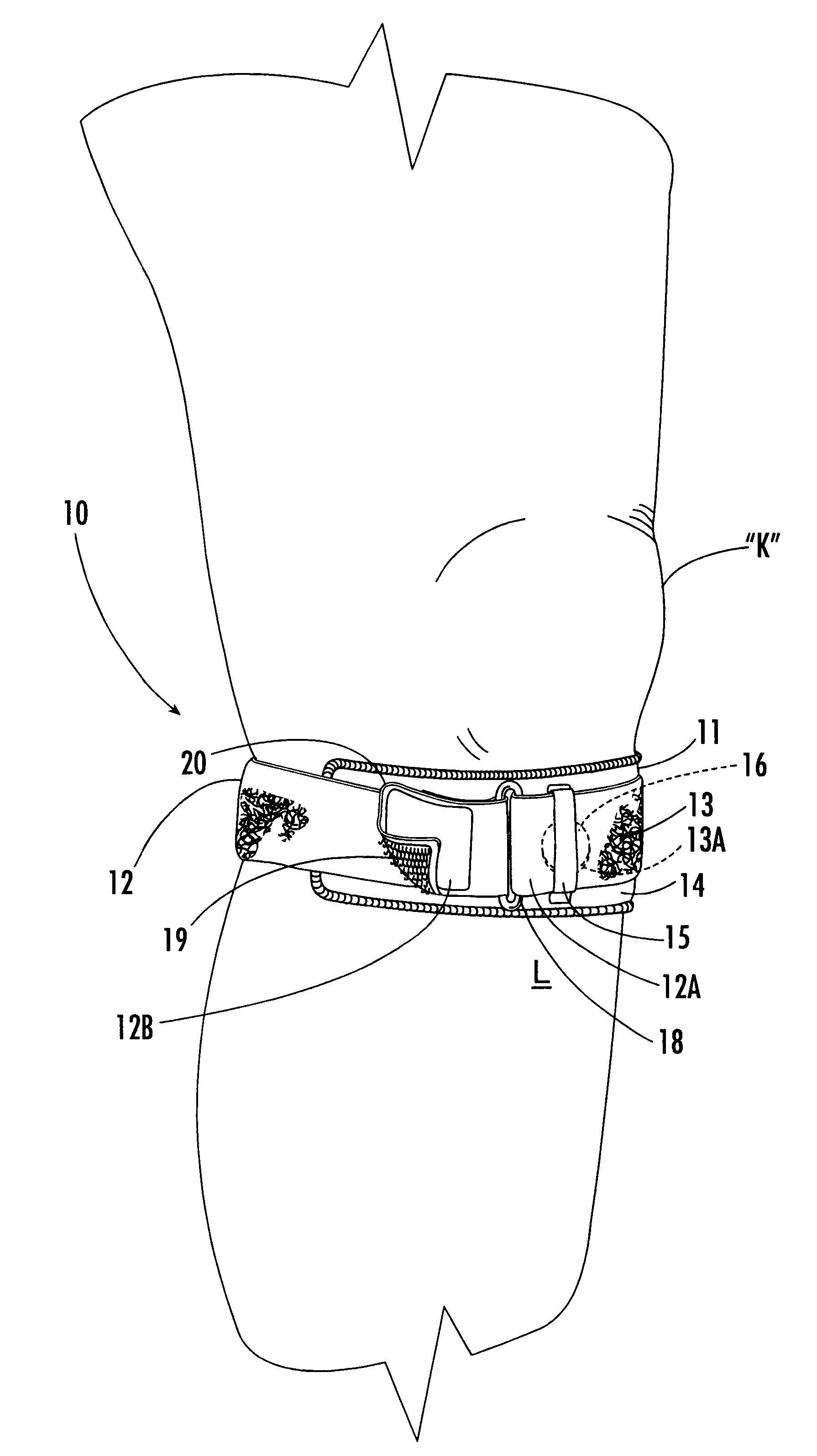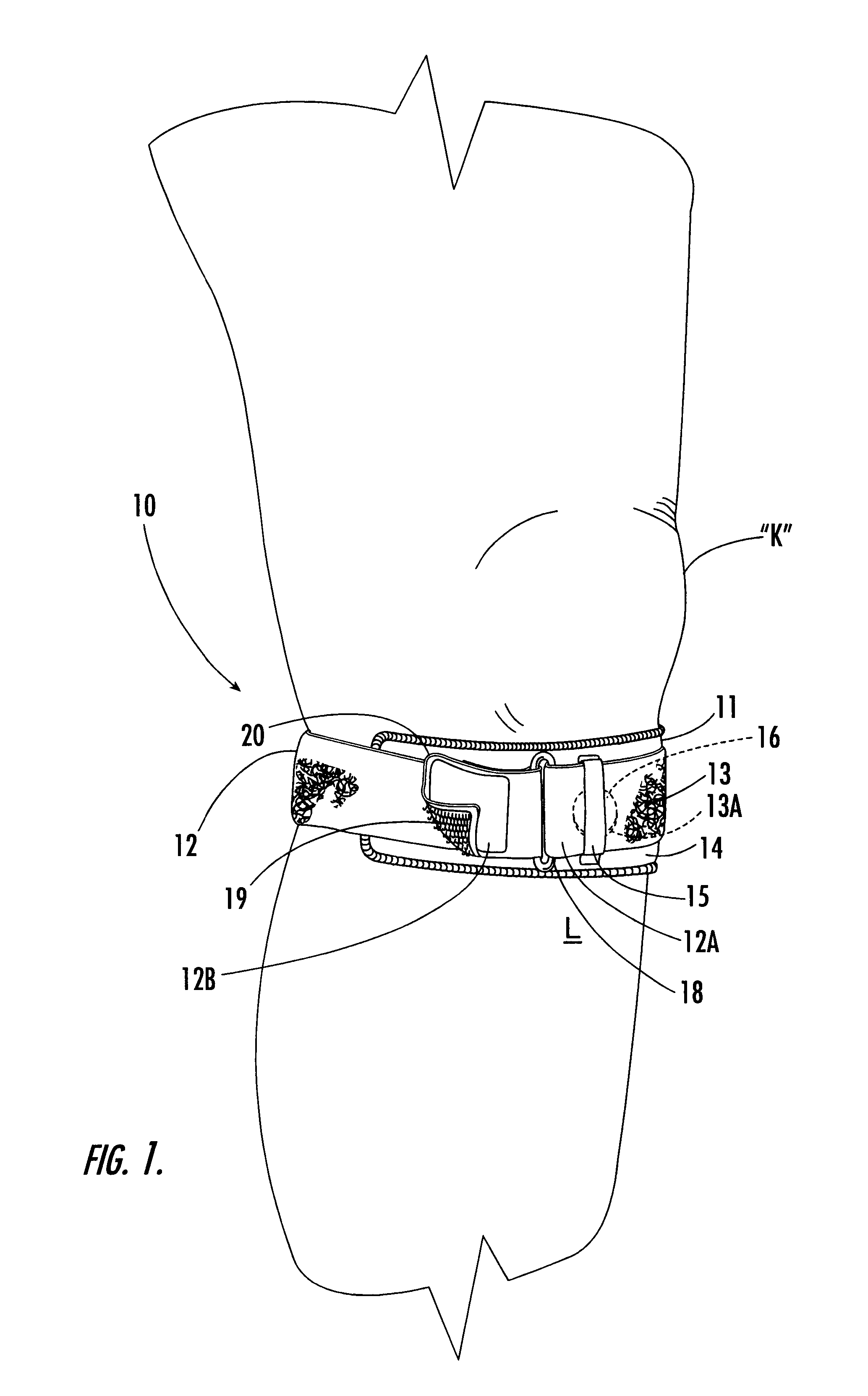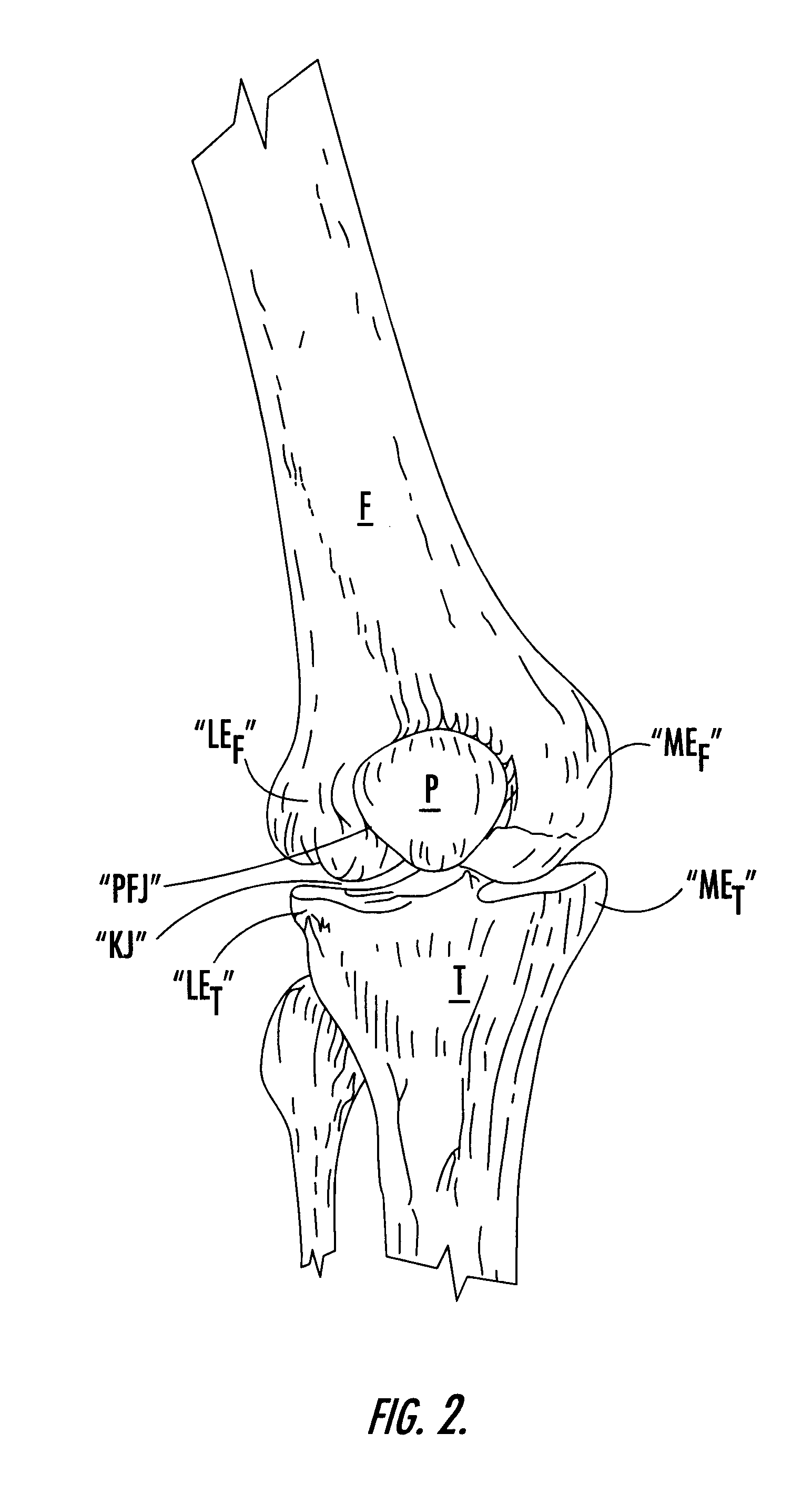Custom-moldable support for patellar tendinitis
a patellar tendinitis and support technology, applied in the field of custom-molded support, can solve the problems of patellar tendinitis, inability to provide adequate pain relief by prior art methods for treating patellar tendinitis, inflammation and tear of tendons, etc., and achieve the effect of convenient fabrication
- Summary
- Abstract
- Description
- Claims
- Application Information
AI Technical Summary
Benefits of technology
Problems solved by technology
Method used
Image
Examples
Embodiment Construction
Referring now specifically to the drawings, a knee pad assembly is illustrated in FIG. 1 and shown generally at reference numeral 10. The assembly 10 includes a pad 11 which, as is described more fully in reference to FIGS. 7, 8 and 9 below, is custom-molded to fit immediately below a wearer's knee "K", and is held in place by an elongate strap 12. Although the strap 12 may be formed from any suitable flexible substance, the strap 12 is preferably formed of a narrow length of elasticized woven or knitted material having a raised, fibrous surface 13 to which a patch of looped material 13 A is attached. The pad 11 has an upper surface 14 to which the ends of a relatively narrow strap loop 15 are sewn. The loop 15 extends across the width of the pad 11 and maintains the pad 11 in place against the lower leg "L". A second patch of hooked material 16 is attached to the upper surface 14 of the pad 11. The strap 12 has a first end 12A to which a D-ring 18 is secured. A third patch of hooke...
PUM
 Login to View More
Login to View More Abstract
Description
Claims
Application Information
 Login to View More
Login to View More - R&D
- Intellectual Property
- Life Sciences
- Materials
- Tech Scout
- Unparalleled Data Quality
- Higher Quality Content
- 60% Fewer Hallucinations
Browse by: Latest US Patents, China's latest patents, Technical Efficacy Thesaurus, Application Domain, Technology Topic, Popular Technical Reports.
© 2025 PatSnap. All rights reserved.Legal|Privacy policy|Modern Slavery Act Transparency Statement|Sitemap|About US| Contact US: help@patsnap.com



